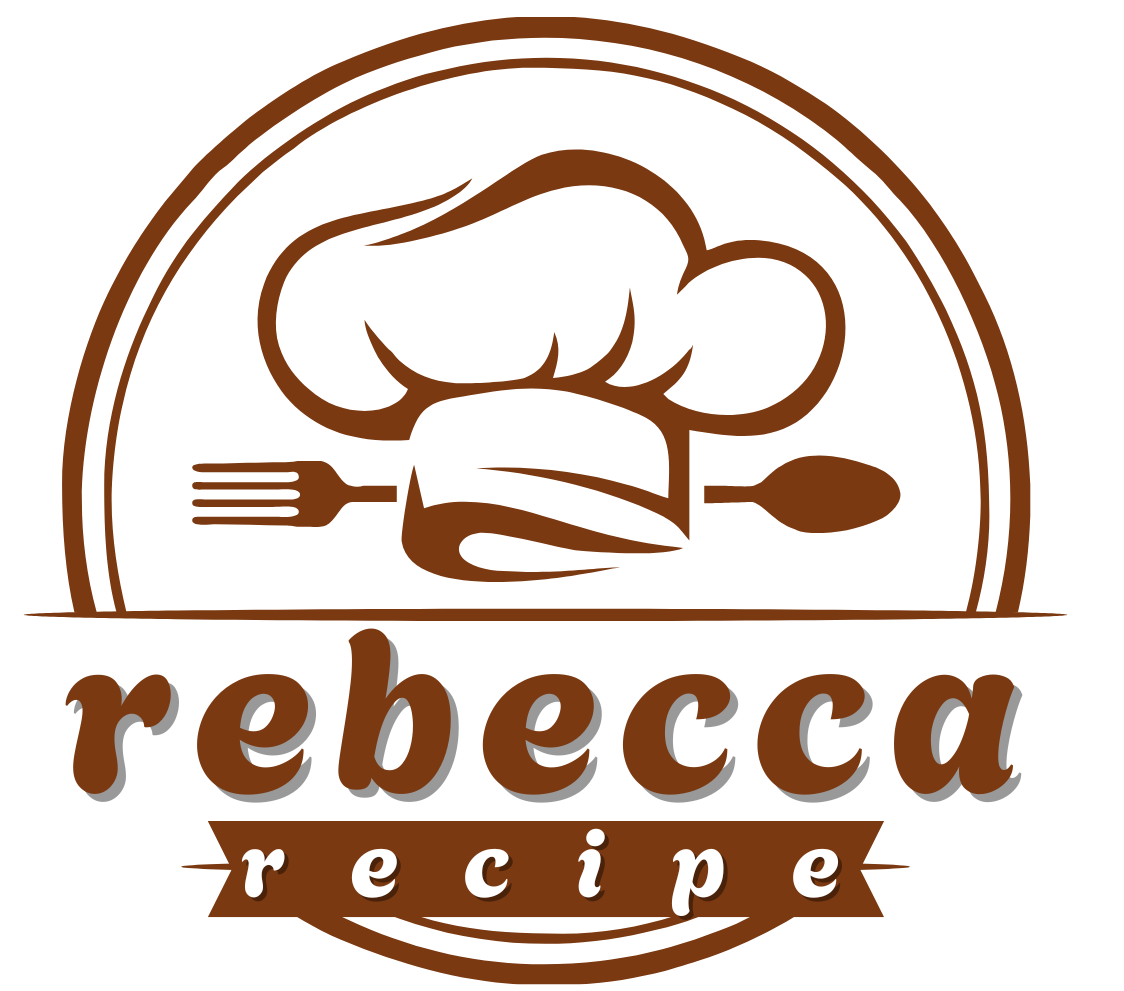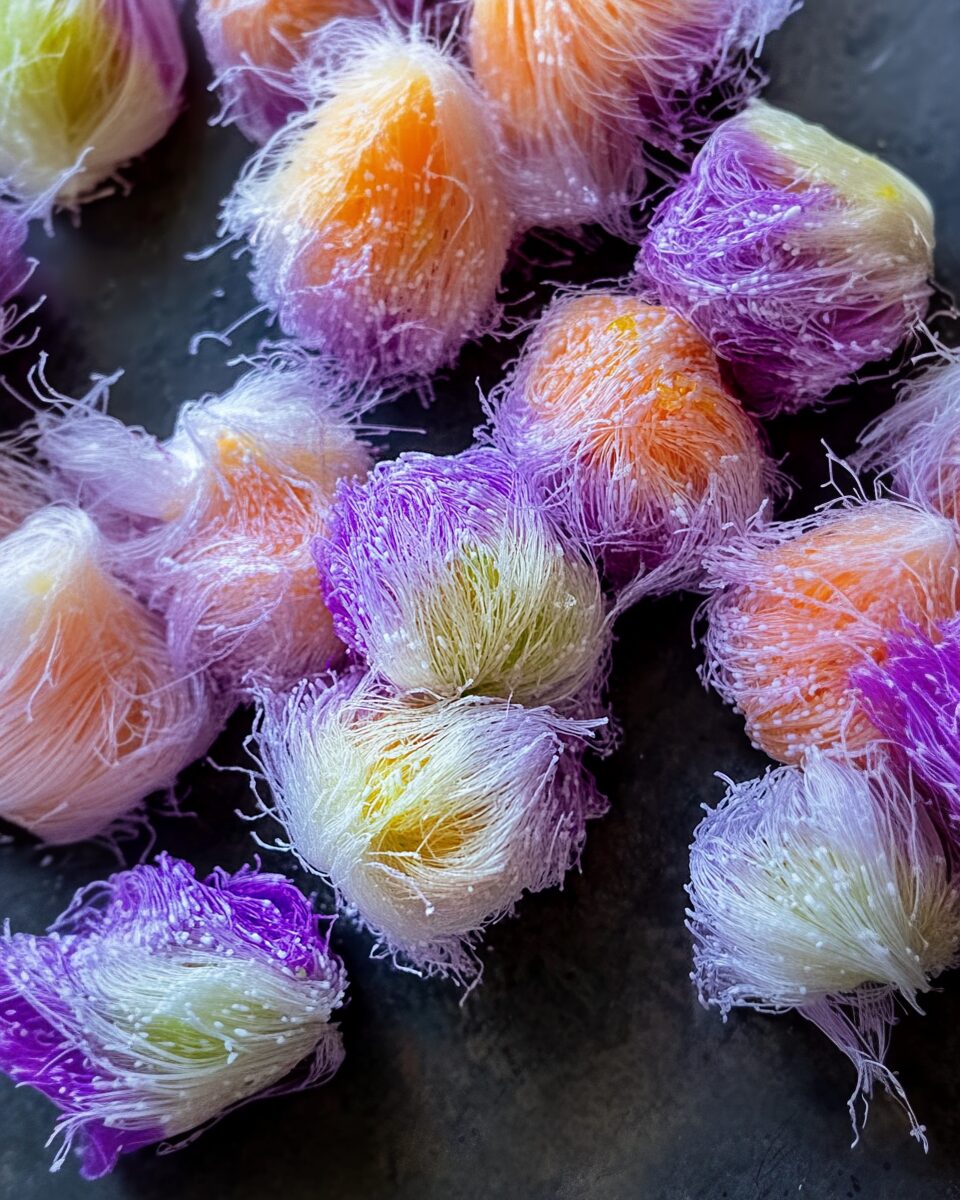Dragon’s beard candy, an ancient Chinese treat, has recently gained popularity on social media, especially during the Year of the Dragon. This candy is not only a visual treat with its delicate, thread-like strands but also a fun recipe to make, combining the skill of candy pulling with a delicious crunchy filling. It is perfect for those looking to try something unique and sweet, especially for Lunar New Year celebrations.
Full Recipe:
Ingredients
- 1/2 cup water
- 1 cup light corn syrup
- 1 tbsp white vinegar
- 2 cups granulated sugar
- Food coloring (optional)
- Cornstarch (for dusting)
- Filling: chopped roasted peanuts (or any preferred filling like walnuts, pistachios, toasted sesame seeds, shredded coconut, or dried fruits)
Directions
- In a medium pot, combine the water, corn syrup, vinegar, and sugar. Stir to combine.
- Add food coloring to the mixture if you want vibrant candy.
- Cook the mixture over medium heat, without stirring, until it reaches 260-265°F (hard ball stage).
- While the syrup is cooking, line a rimmed baking sheet with a nonstick mat. Grease two 4-inch metal ring cutters or two pint containers if you don’t have metal rings.
- Once the syrup reaches the correct temperature, pour it evenly into the molds, leaving the centers empty. Let it set for about 15-20 minutes until the candy is set but still pliable.
- Dust a large bowl with cornstarch and unmold one ring of candy. Begin gently pulling the candy, creating loops about 12-15 inches in diameter.
- Continue pulling and stacking the candy into a figure-eight shape. With each pull, the candy will double in size. Stop once you have about 1,048,576 strands (about 20 pulls).
- Once the candy is thin enough, cut a 4-inch section using kitchen shears and lightly stretch it.
- Dust the candy with cornstarch and add chopped peanuts or your chosen filling.
Nutritional Facts
- Serving Size: 1 piece (approx. 2g)
- Calories: 15
- Carbohydrates: 4g
- Sugars: 3g
- Fat: 0g
- Protein: 0g
- Sodium: 0mg
- Fiber: 0g
A Sweet Legacy: The History of Dragon’s Beard Candy
The origins of Dragon’s Beard Candy can be traced back over 2,000 years to the Han Dynasty in China. It is believed that a court chef first crafted the candy as a special treat for the emperor. According to legend, while enjoying the candy, the emperor noticed its wispy strands clung to his face, resembling a dragon’s beard. This association with the mythical and powerful creature led to the candy’s distinctive name.
Initially, Dragon’s Beard Candy was a delicacy reserved for the imperial family and high-ranking officials. Over time, as the technique became more widely known, street vendors and confectioners began producing it, making it accessible to the general public. Today, it remains a popular treat in China, Taiwan, and other East Asian countries, often found at festivals, specialty sweet shops, and cultural events.
Cultural Significance and Symbolism
Dragon’s Beard Candy is more than just a confection; it carries deep cultural meaning. In Chinese tradition, dragons symbolize power, prosperity, and good fortune. The candy’s name and appearance align with these themes, making it a popular treat during celebrations such as the Lunar New Year and weddings.
Offering Dragon’s Beard Candy to guests is a way of sharing blessings and well-wishes. In some regions, it is believed that eating the candy can bring longevity and happiness. Its delicate strands, which require careful handling, are also seen as a representation of patience and craftsmanship, values that are highly respected in Chinese culture.
The Art of Hand-Pulling Sugar Threads
One of the most fascinating aspects of Dragon’s Beard Candy is its preparation. Unlike most sweets, which are formed using molds or machines, this candy is entirely handmade through a meticulous pulling process. The main ingredient, a mixture of sugar and maltose syrup, is heated to a precise temperature until it reaches a thick, caramel-like consistency. Once cooled slightly, it is shaped into a ring and then continuously stretched and folded.
Each time the sugar loop is stretched and twisted, it doubles in strands. Through dozens of repetitions, the candy transforms into thousands of ultra-fine threads, resembling silk or fine hair. This technique requires skill and precision, as pulling too hard can break the strands, while insufficient stretching results in thick, uneven threads.
After achieving the desired texture, the strands are carefully wrapped around a filling, which typically consists of crushed peanuts, sesame seeds, and sometimes desiccated coconut. The combination of delicate outer threads and a crunchy interior creates a unique contrast of textures and flavors.
Challenges in Making Dragon’s Beard Candy
Creating Dragon’s Beard Candy is not for the faint of heart. The process demands patience, skill, and an understanding of sugar’s delicate properties. Some of the main challenges include:
- Temperature Control: The sugar mixture must be heated precisely to achieve the right consistency. If it is too hot, it will harden too quickly; if too cool, it will not stretch properly.
- Humidity Sensitivity: Because sugar absorbs moisture, high humidity can cause the candy strands to stick together, ruining their delicate texture.
- Manual Dexterity: The pulling and twisting process requires practiced hands. Overstretching can cause the candy to break, while under-pulling results in thick, doughy strands.
- Short Shelf Life: Unlike many commercial candies that last for months, Dragon’s Beard Candy is best enjoyed fresh. Exposure to air can cause it to lose its signature texture within hours.
Taste and Texture: A Unique Sensory Experience
Dragon’s Beard Candy offers a distinct taste and mouthfeel unlike any other sweet treat. The outer strands are incredibly light and airy, melting instantly when placed on the tongue. This delicate texture is often compared to cotton candy, but with a more refined chew.
The inner filling provides a nutty, slightly savory contrast to the sugary exterior. Roasted peanuts and sesame seeds add crunch and depth, balancing the overall sweetness of the candy. Some variations incorporate coconut shavings or a touch of honey for additional complexity. The result is a harmonious blend of flavors and textures that makes each bite both intriguing and satisfying.
Modern Twists on a Traditional Candy
While the traditional Dragon’s Beard Candy recipe remains beloved, modern confectioners have introduced creative variations to appeal to contemporary tastes. Some popular adaptations include:
- Matcha Infusion: Adding green tea powder to the sugar mixture for an earthy, slightly bitter contrast to the sweetness.
- Chocolate Coating: Some versions incorporate a thin layer of chocolate over the delicate strands for a fusion of Eastern and Western flavors.
- Fruit-Flavored Variants: Dried fruit powders like strawberry, mango, or lychee are sometimes mixed into the sugar, creating a refreshing twist on the classic recipe.
- Colorful Variations: While traditional Dragon’s Beard Candy is white, some versions use natural food coloring to create pastel or vibrant hues, making them visually striking.
These innovations have helped introduce the candy to new audiences while preserving its artisanal roots.
Comparisons to Other Confections
Dragon’s Beard Candy is often likened to Western cotton candy, but the two treats are fundamentally different. Cotton candy is made by spinning melted sugar at high speeds, creating fluffy, cloud-like strands that dissolve almost instantly. In contrast, Dragon’s Beard Candy is manually stretched and layered, resulting in a denser texture and a more intricate mouthfeel.
Another similar confection is Turkish Pişmaniye, which also consists of fine sugar threads, but it has a more flour-based composition, giving it a different consistency. The meticulous technique behind Dragon’s Beard Candy sets it apart from other sweets, emphasizing craftsmanship and tradition.
Where to Find Dragon’s Beard Candy Today
Due to its labor-intensive preparation, Dragon’s Beard Candy is not commonly found in regular supermarkets. Instead, it is typically sold at specialty Asian markets, traditional confectionery stalls, and cultural festivals. Some street vendors still make it fresh on-site, providing a mesmerizing spectacle for onlookers.
In recent years, some online stores have begun offering pre-packaged versions, but these often lack the delicate, airy texture of freshly made candy. The best way to experience Dragon’s Beard Candy is to watch a skilled artisan prepare it and enjoy it immediately after it is made.
Conclusion
Dragon’s Beard Candy is more than just a sweet treat—it is a testament to culinary artistry, tradition, and patience. Its rich history, cultural significance, and intricate preparation make it a standout confection that has been cherished for generations. Though challenging to make, its delicate texture and balanced flavors continue to captivate those who experience it.






